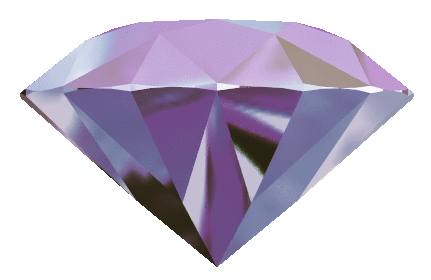Learn to compare and evaluate the value of a diamond
Shopping for an engagement ring or loose diamond?
HOW TO BUY A DIAMOND
It is important to understand how to determine the value of a diamond before purchasing one. The four C’s – cut, color, carat, and clarity – provide a way to objectively compare and evaluate diamonds. It’s helpful for you to know and understand the four C’s before beginning your search.
CUT
Each diamond is cut using an exact mathematical formula that results in a display of three attributes: brightness (the combination of all white light reflecting from the surface and interior of the diamond), fire (the flares of color emitted from a diamond), and scintillation (the flashes of light you see when the diamond or observer moves).
The cut of a diamond also refers to the number of facets that the diamond has. The mathematical formula also takes into account the depth of the cut. If a diamond is cut too shallow or too deep it will lose some of its fire. A well-cut diamond will reflect the light and will have increased brightness, fire, and scintillation.

COLOR
Diamonds come in every color of the spectrum but the most popular, and very rare, gems are colorless. Most diamonds used in jewelry are nearly colorless with tints of yellow or brown. Diamond color is graded on a scale established by the GIA. They range in color from D (colorless) to Z. The closer to Z, the more yellow the diamond appears.

CARAT
One carat equals 200 milligrams in weight. One carat is made up of 100 points. For diamonds under one carat, each carat is divided into 100 points. For example, 0.75 ct = 75 points or ½ ct = 50 points.

CLARITY
Because diamonds form under tremendous heat and pressure, it is very rare to find a flawless diamond. Internal and external imperfections such as spots, lines, or bubbles, affect the clarity of a diamond. These imperfections are known as inclusions and interfere with the passage of light throughout the stone. The GIA clarity scale includes eleven clarity grades ranging from flawless to I3.

OTHER TERMS THAT ARE HELPFUL TO KNOW
- Baguette
rectangular shaped small diamonds that are often used to enhance a larger stone. - Bezel setting
a setting technique where the diamond is completely surrounded by metal. - Channel setting
small, uniformed in size stones set in rows. Two strips of metal hold the stones at the sides. - Fancy cut
a diamond cut in any other shape rather than round. Includes shapes such as baguette, emerald, triangle, pear, princess, oval, and marquis.

